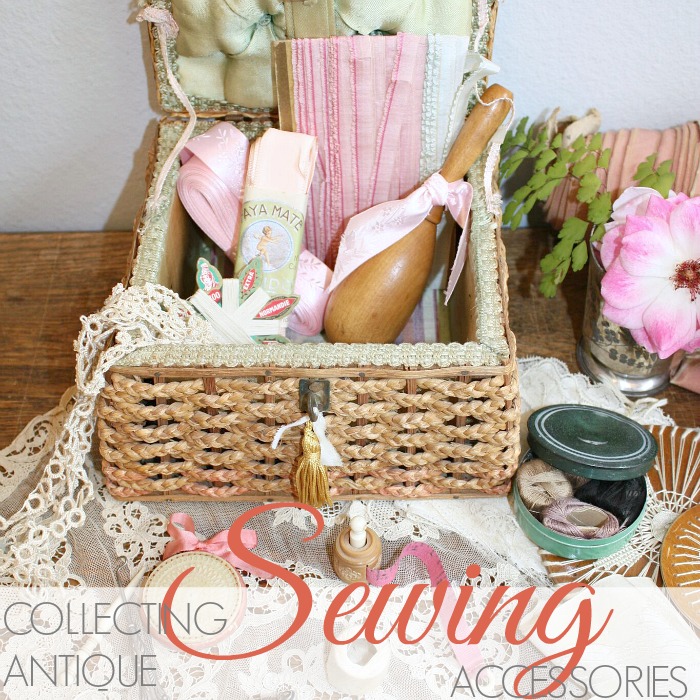
Passed down with great love from mother to daughter, sister to sister, and friend to friend, sewing tools and accessories have always been prized personal possessions. I’m sharing about Collecting Sewing Antiques today on the blog.
Because a Victorian woman often did not have the legal right to own property herself, depending on what state or country she lived in, her sewing accessories were one of the few things she could bequeath to someone she loved. Sewing tools, with their sentimental resonance, were quite precious to those who inherited them.
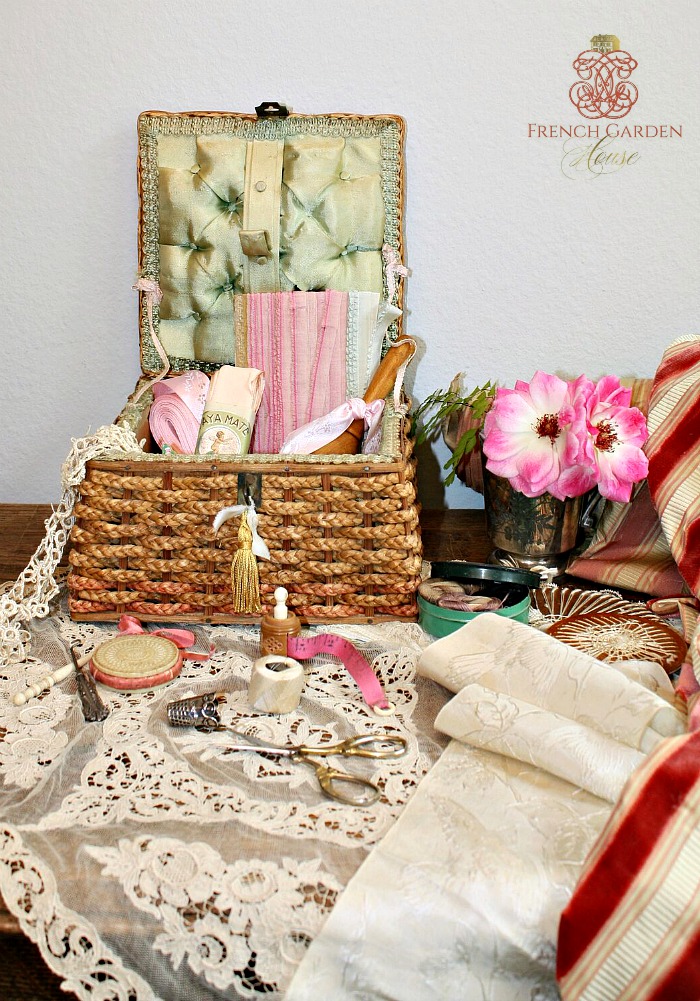
These tools were often objects of art in their own right, made of the finest materials. There was a tool for each task, and each of those tools came in many variations. Most Victorian young women received a fully outfitted sewing basket for a special birthday, or as part of her trousseau.
This article about antique sewing tools and accessories is in the Winter 2018 issue of Victorian Homes Magazine…I’m excited to share it with you here today.
Often overlooked, these precious small mementoes of women in history are a delight to collect!
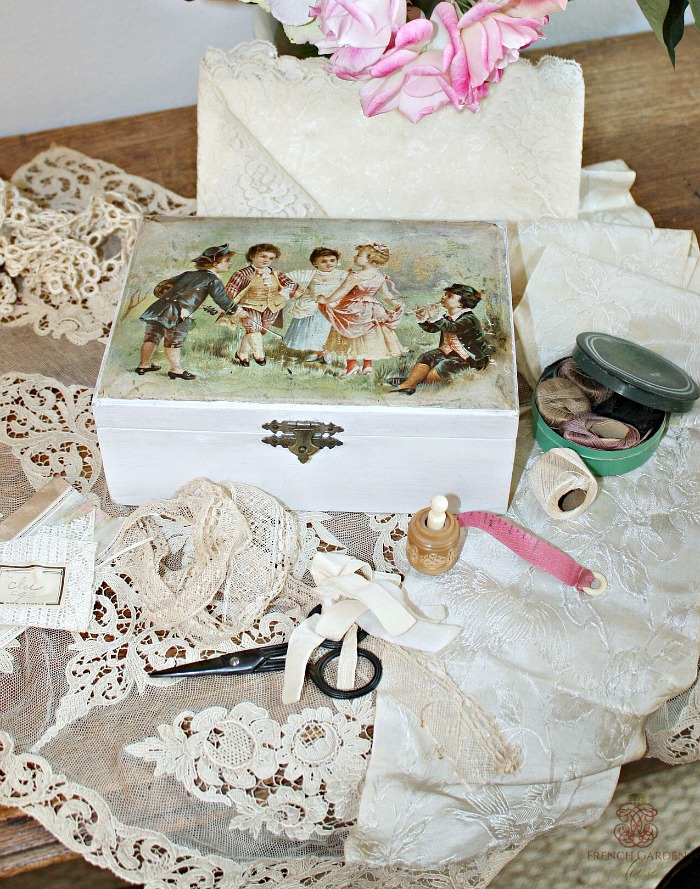
THE HISTORY OF SEWING
The art of sewing has a long history, beginning with the Paleolithic Age when Stone Age people used sinew to piece animal hides together for clothing and shelter. Throughout the centuries, weaving cloth, making patterns, cutting fabric and piecing this together to produce clothing as well as all household linens took up many work hours in every woman’s life.
Until the Middle Ages clothing was sewn to be practical, not beautiful. Most of the population made their own cloth, in natural colors of flax, wool and linen. Only European nobility could afford to employ seamstresses to fabricate richly colored and embellished robes and gowns for them.
Antique French Gilt SOUVENIR Pin Cushion
Although sewing has always been associated with women throughout history, men also have a rich history of sewing. Sailors learned to mend the great billowing sails on their ships out of necessity, and also how to mend their clothing while they were away at sea. Tailors are the ultimate example of men who sew, fashioning quality gentlemen’s suits and shirts.
While decorative needlework such as embroidery was seen as an essential component of female virtue for noble women from the Middle Ages until the early 1800’s, it wasn’t until the Victorian age that home sewing for pleasure became immensely popular.
Antique Sterling and Ebonized Glove Mender
Even Britain’s Queen Victoria was taught considerable skill with a needle. It was believed that every Victorian young woman should be an expert in the fine art of sewing, a vital accomplishment for every bride and mother. Coinciding with the invention of the first sewing machine, the popularity of sewing at home brought along with it the production of sewing tools of every kind, for every budget.
Vintage Pale Pink Cupid Ribbon
THE APPEAL OF SEWING ACCESSORIES
The most exciting part of collecting antique sewing accessories and tools is their very personal nature. The sewing boxes, needle holders, pin cushions, tape measures and other implements belonging to a seamstress long ago were touched often by her hands, they are the thread that connects us to her past. Each one is a fascinating reminder of the beauty she created with skill and much affection, as she sewed for those she loved.
Hand Carved Tape Measure & Holder
More than just the act of piercing cloth with a needle and thread, sewing, for middle class Victorian women, was a way they could work with dignity, joy and meaning. Often done in company, sewing together was a way to connect, to spend time in the company of other women and share the latest fashions and society news.
TYPES OF SEWING ACCESSORIES
The customary Victorian Sewing Basket included a needle case, a thimble, sewing scissors, thread, a pincushion, hem gauges, and darning tools, along with a variety of buttons. There were thread winders, hand-inked measuring tapes, stiletto needles, sewing clamps, chatelaine accessories for the seamstress, and much more.
There are many different types of sewing accessories avidly collected today, this is just a glimpse into the alluring world of antique needlework tools.
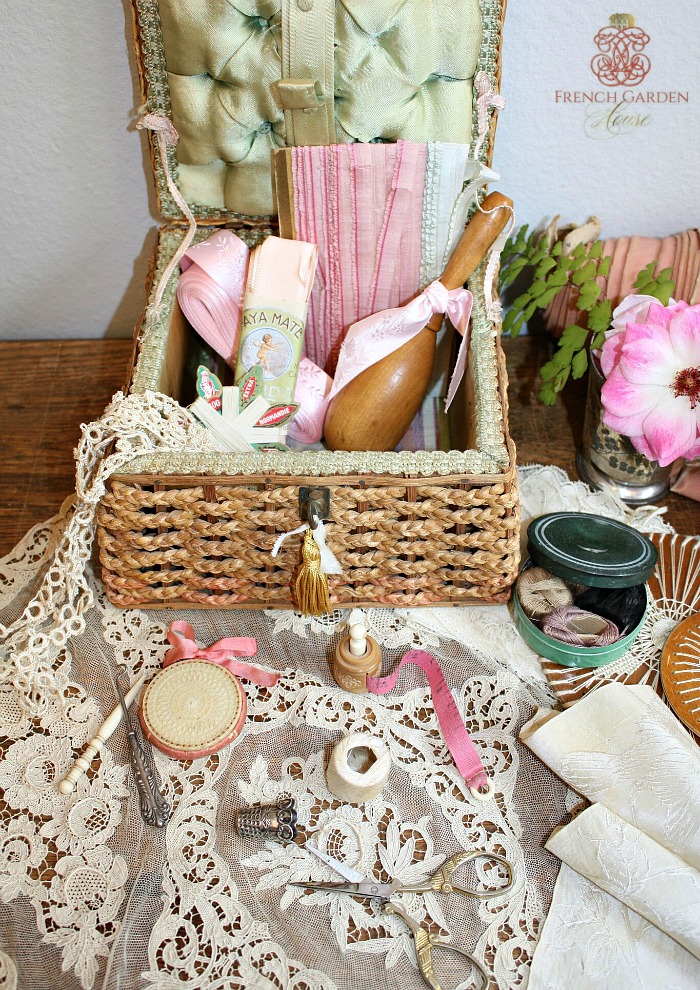
Sewing Baskets.
The very earliest sewing “containers” meant to hold needles, thread and scissors were bags of leather or thick fabric. By the 18th century, as artists and craftsmen in Europe were crafting fine sewing tools for noble ladies, costly sewing baskets and boxes were also produced. Inlaid with gems and precious metals, these boxes were only for the very wealthy.
During the Victorian era, the rise of the middle classes established a market for less expensive and more practical sewing baskets. Just large enough to hold her sewing tools, and perhaps a book of poetry, a woman’s sewing basket or box was considered her intimate space. There was a certain regard for the privacy of a sewing basket, just as there is these days for a lady’s purse.
Needle Cases
Needles were kept safe and secure in needle cases specifically made for this purpose. The range of needle cases is extensive, they come in a variety of materials and there are needle cases for every price point.
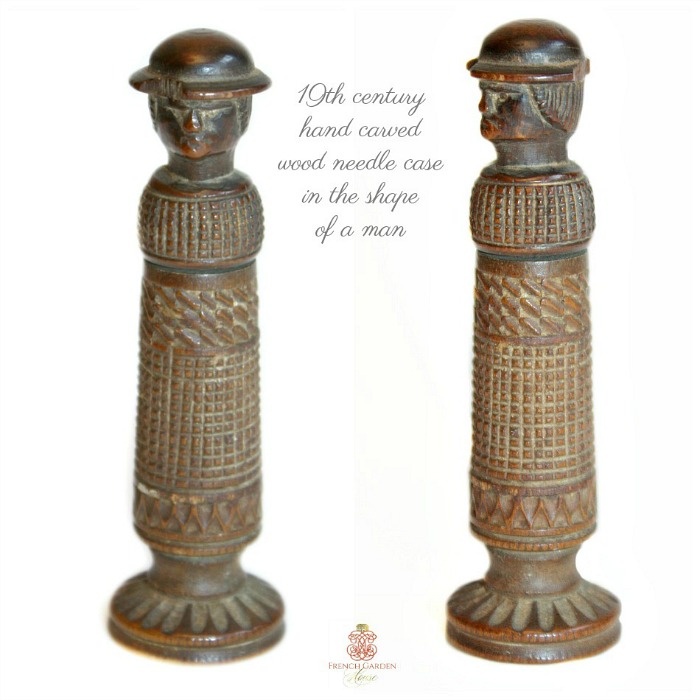
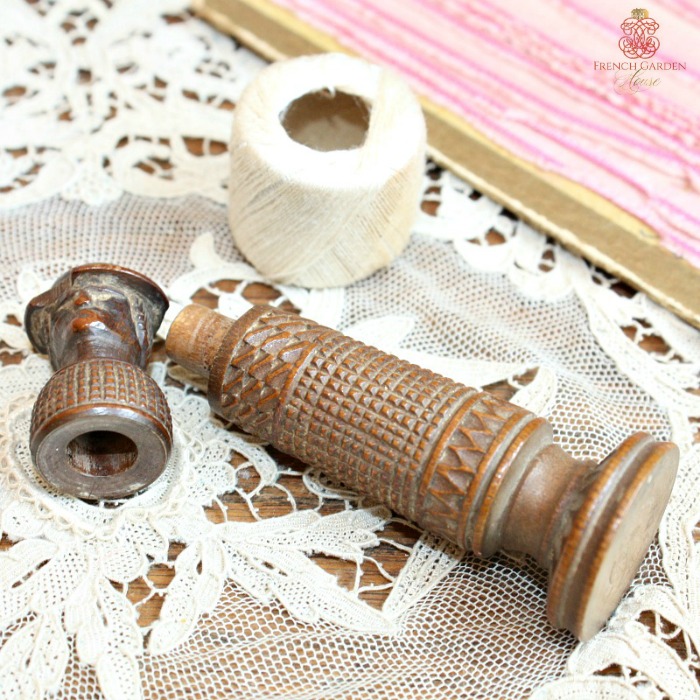
Antique Hand Carved Gentleman Needle Case
Hand carved of wood or bone, made of gleaming sterling by silver smiths, or lovingly perfected in hand painted porcelain, each is unique. Often shaped like a figural or decorative item, a needle case was a favored gift for the holidays or birthdays.
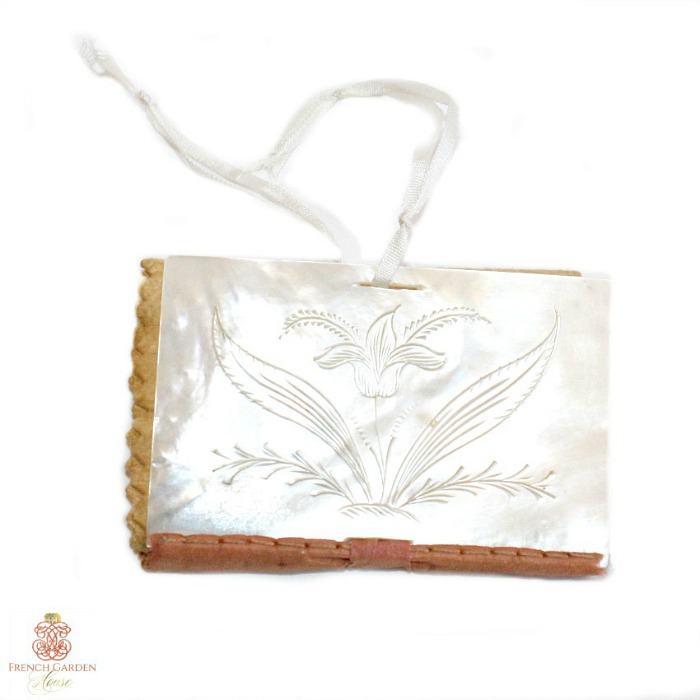
Palais Royale French Mother of Pearl Needle Case
Thimbles
The most sought after sewing collectable, the thimble, or the sewer’s wedding ring as it’s sometimes called, was worn over a woman’s finger or thumb to protect it from needle pricks.
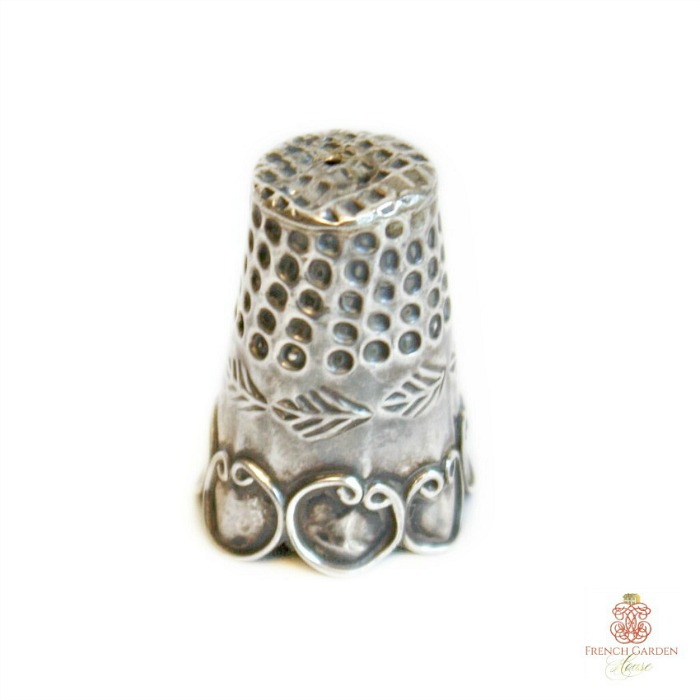
Made of gold, sterling silver, bronze or porcelain, a woman’s thimble was the most personal possession in her sewing basket. The thimbles in perfect condition demand the highest prices, those that are battered and obviously worn have so much character and history that some collectors prefer them.
Pincushions
Pins were used for securing clothing while sewing, it was inevitable that “keeps” of every sort would be produced. At first, when pins were quite costly, little boxes were made to keep the pins safe and rust free.
Once pins were mass produced during the mid 1800’s, and therefore more affordable, pincushions became part of the Victorian sewing room.
Antique French Gilt SOUVENIR Pin Cushion
Novelty pincushions were popular gifts for any lady, made in the shape of little dolls, shoes, animals and other fanciful shapes had whimsical appeal.
Scissors
Scissors and shears came in all sizes, from diminutive embroidery scissors to large shears meant for cutting fabrics. Gold plated scissors with handles shaped like storks or owls were the distinctive design of John Rogers & Sons and Thomas Wilkinson & Sons, of Sheffield, England.

The backbone of any seamstress’ accoutrement, scissors were soon produced with a variety of ornate handles, made of mother-of-pearl, bone, and repousse sterling silver. These stylish scissors became a popular courtship gift.
Victorian Ebonized & Sterling Darning Egg
These sewing accessories and tools were devised to help with the practical problems of sewing, but they were often made with great craftsmanship and imbued with beauty.
Hand Carved Measuring Tape & Holder with Stanhope
Each one is a small work of art, providing us with a very tangible link to our past. Whether you collect just one kind of sewing accessory, or all, you will be charmed with their inherent beauty, and whimsical nature. If you still use them for sewing, so much the better!
Sewing mends the soul. ~Author Unknown
DO YOU COLLECT SEWING ANTIQUES? OR SEW USING BEAUTIFUL ACCESSORIES?

Shop for the best in French Antiques, furniture with the patina of age, vintage accessories to delight you and your family & friends, and French Country utilitarian pieces. Treasures that make your home fresh, beautiful, inspirational and uniquely yours. Visit our shop FrenchGardenHouse.com

 Your Cart
Your Cart
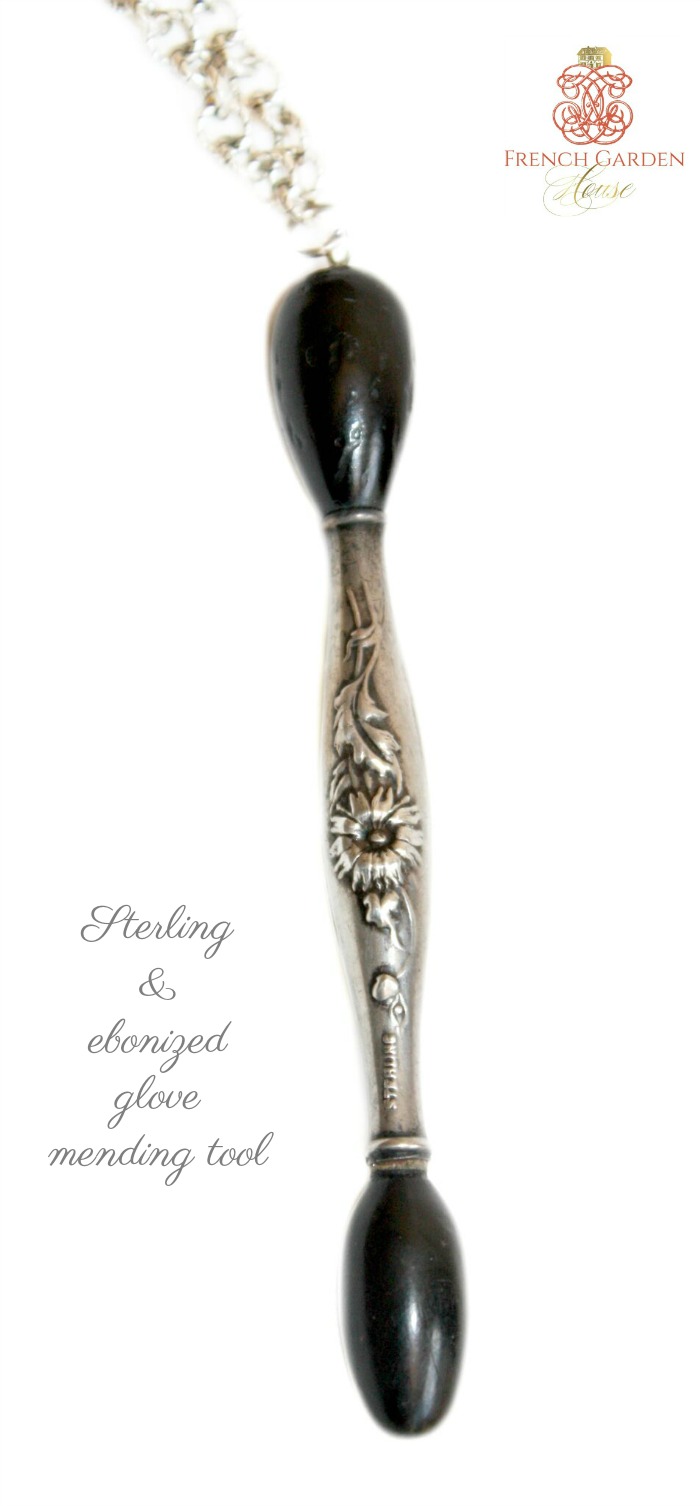
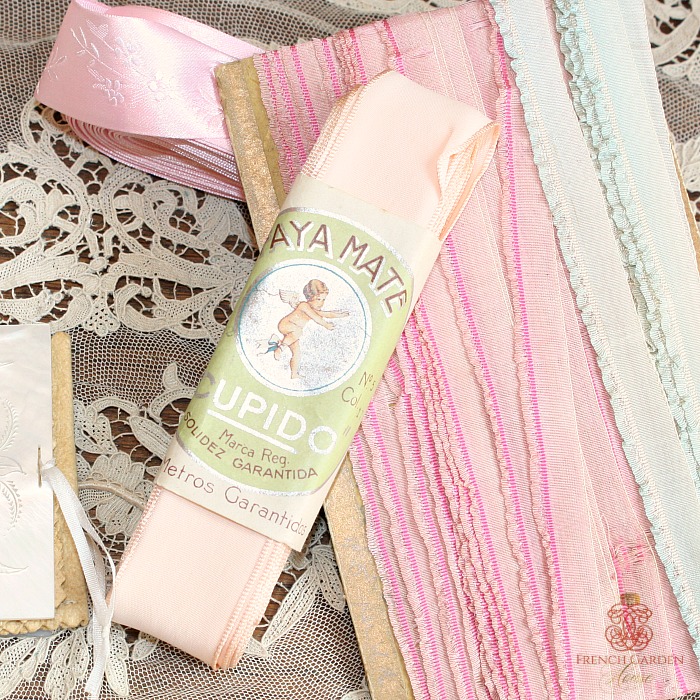
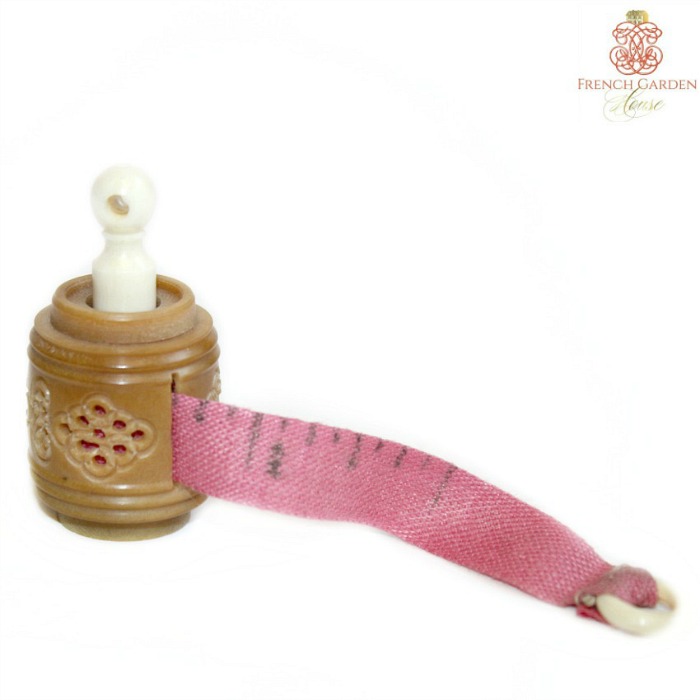
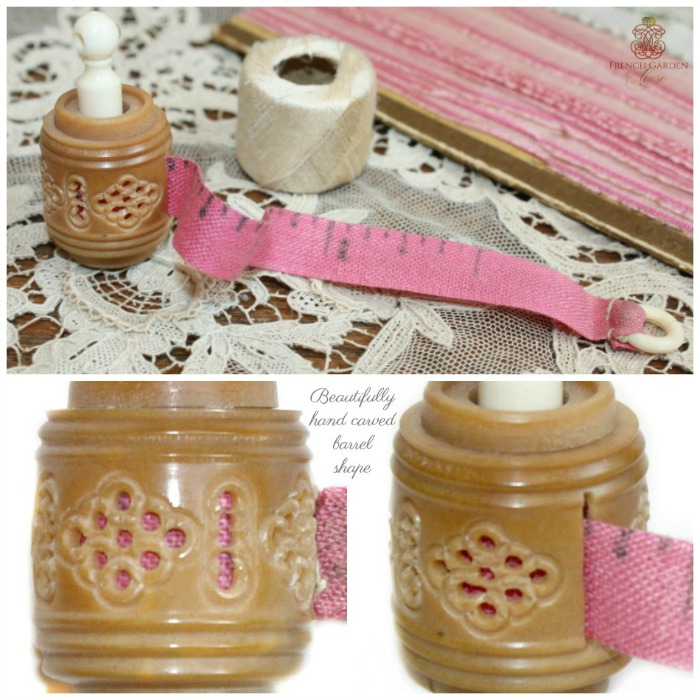

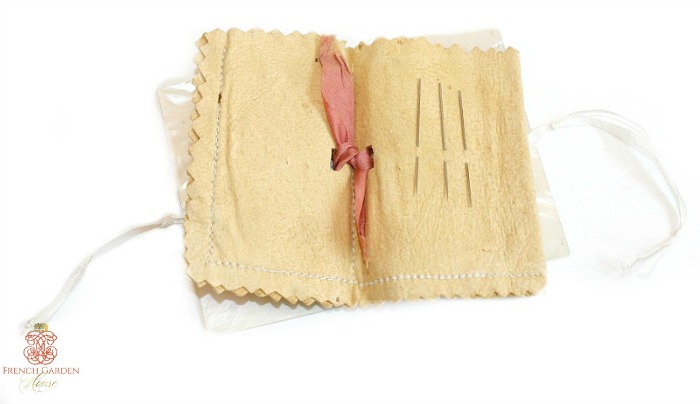
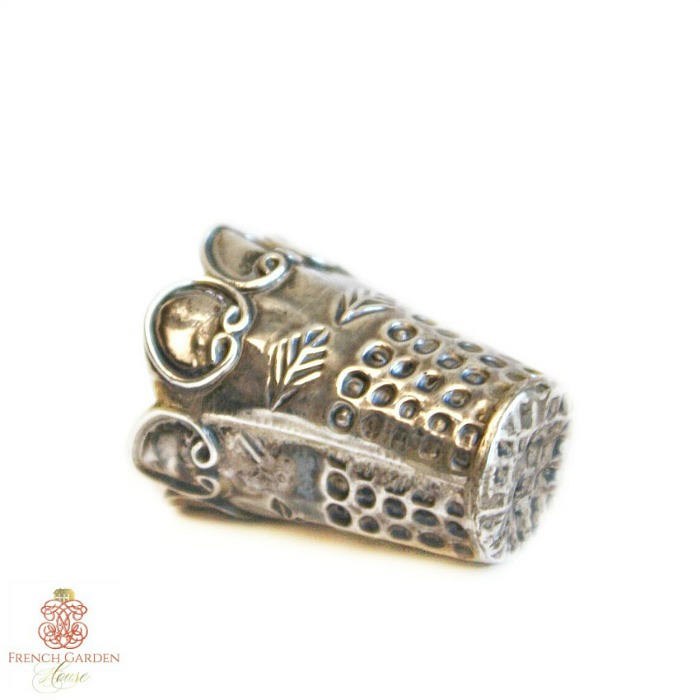
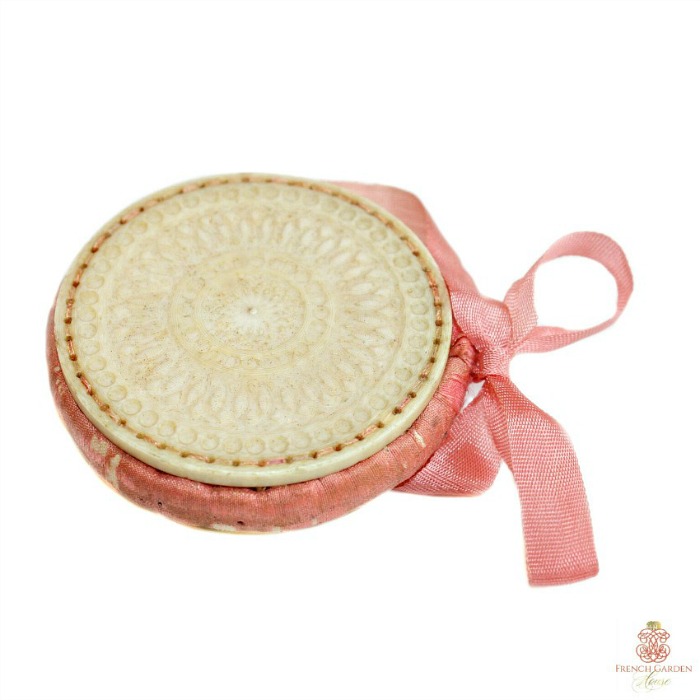



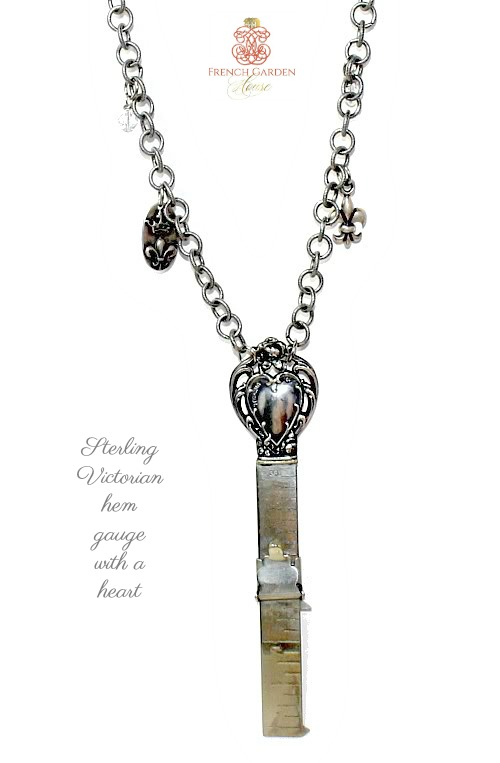
Oh, Lidy – these tools are simply exquisite! The carved measuring tape with stanhope (!), the sterling glove mender and hem gauge – so unique. Each one and all together – what an amazing collection. Your history behind them all brings the deserved attention they each should have. Such treasures, thank you for sharing!
Rita, aren’t the tools our ancestors used to sew with so incredible? To know that these little bits of history meant so much to the women who owned them makes them even more precious.
Thank so much for sharing, Lidy. These are such treasures!
I come from a long line of “sewers” and and sewed my own clothes for years until I started sewing curtains for our various homes! I still enjoy all kinds of needlework and am immediately drawn to all things fabric — new and old — quilts, tablecloths, feed sacks, toweling, etc. I just cannot resist!
Happy New Year to you! I look forward to more of your informative “back stories” on so many treasures!
Janet, like you, I also come from a long line of “sewers” and will admit to having a huge collection of antique fabrics, I almost never pass by a beautiful piece of fabric, because, as you know, “you never know” when it may come in handy. Thank you for sharing my sewing love!
Oh my Lidy…another most wonderfully informative post! I cannot imagine having a sewing basket filled with these exquisite works of art!!! Happy New Year LIdy!!!
Thank you Shirley, it’s such fun to learn about the antiques we all love, isn’t it? Happy New Year to you, too!
Absolutely charmed by these sewing tools and the history. I have been sewing on the machine and by hand since junior high school Home Ec classes and it is one of my greatest pleasures. For many years i could be found with needle and thread or yarn after dinner, dishes and baths were over. So much satisfaction creating pictures with thread. I also have made clothing, draperies and everything else. even bathing suits back in the day when I’d wear them! I come form a long line of sewers, quilters, and every kind of hand stitchers. I inherited my aunt’s beautiful bird shaped sewing scissors and mom’s sewing basket and my mother in law’s quilting rulers. thanks for these memories.
Pamela, I’m so thrilled that you inherited your aunt’s, mom’s and mother-in-law’s sewing treasures…these sewing accessories are so very personal, aren’t they? I inherited my Mom’s beautiful scissors, and a few other pieces and I absolutely cherish them.
Oh my how precious and thank you for sharing with us
What a beautiful post and wonderful, unique sewing treasures. I love the glove mender and the sterling silver needle case – stunning! Happy 2018, my friend!
I have my grandmothers darning egg that I use to mend winter thick socks. I now know that others still use these useful items.
I love that Gloria! Not just that you have your grandmother’s darning egg, but that you actually still darn socks!
Most people these days throw them away, which is so wasteful. 🙂
Happy New Year!
Lidy, this post brought back many memories of my grandmothers sewing basket and her tools. I so wonder what happened to them. She had a silver needle case, several thimbles and a tape measure very similar to the one in your photo. There are many things here in your post I have never seen and are so interesting to me. I especially love the silver hem gauge. Thank you for such an informative post.